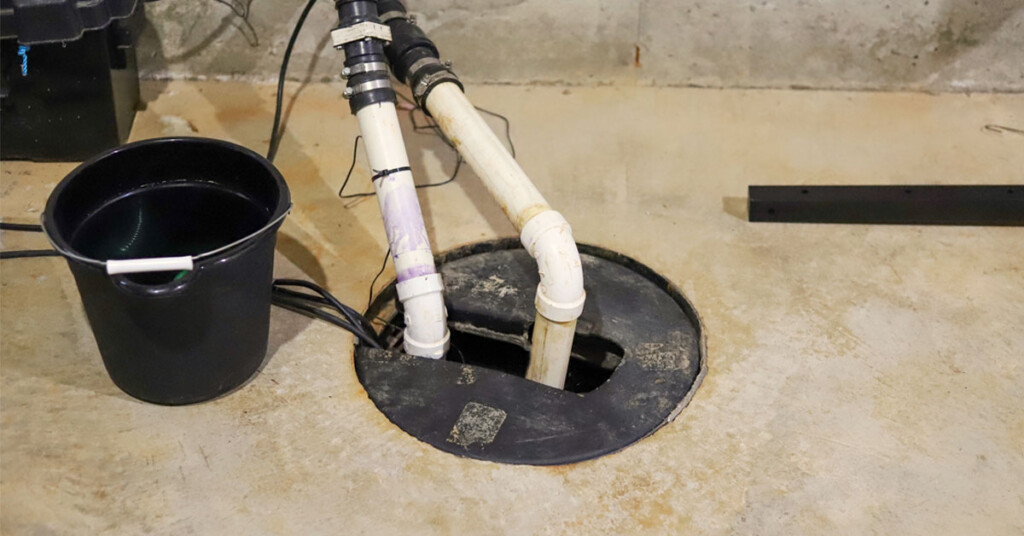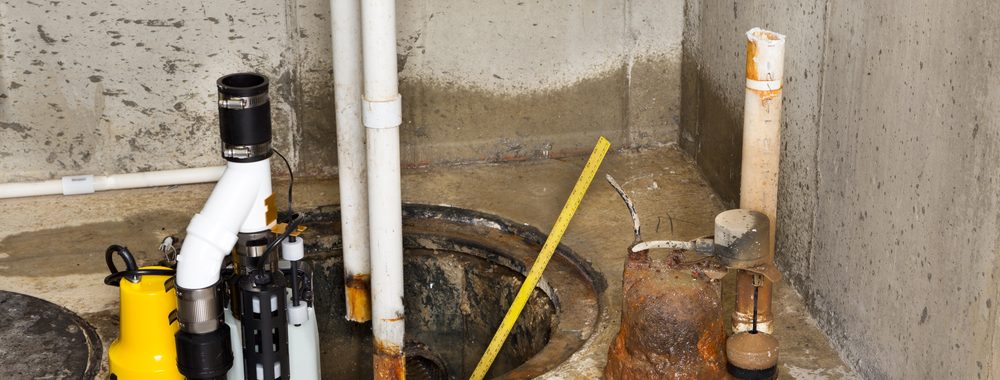Confirmed Solutions for Caring for a Sump Pump
Confirmed Solutions for Caring for a Sump Pump
Blog Article
We've uncovered this great article about Keep Your Sump Pump Clean, It'll Keep You Dry below on the web and figured it made good sense to discuss it with you over here.

Sump pumps are critical elements in several homes, specifically in areas vulnerable to flooding or extreme dampness. They assist stop water damages by effectively removing excess water from basements or crawl spaces. Nevertheless, like any other home appliance, sump pumps call for normal upkeep to ensure they work successfully when required one of the most. Cleaning your sump pump is a crucial part of its upkeep, and recognizing exactly how to do it correctly can conserve you from expensive repairs and potential catastrophes.
Introduction
Maintaining a clean sump pump is vital for its appropriate functioning and long life. Neglecting this crucial job can result in obstructions, malfunctions, and eventually, water damage to your home. For that reason, learning exactly how to cleanse a sump pump is crucial for home owners that rely upon these devices to keep their basements completely dry and protected.
Indicators of a Dirty Sump Pump
Knowing when your sump pump requires cleaning is crucial for stopping possible malfunctions. Some common indications that indicate a dirty sump pump include strange noises during procedure, lowered water circulation, and visible debris in the pit. If you observe any of these signs, it's necessary to cleanse your sump pump quickly to prevent any further problems.
Planning for Cleaning
Prior to you start cleansing your sump pump, it's necessary to take some safety and security preventative measures. Beginning by shutting down the power to the pump to stay clear of any type of electric crashes. In addition, put on suitable safety equipment, such as gloves and goggles, to shield yourself from dirt, particles, and potential pathogens.
Recognizing the Sump Pump
Before diving right into the cleansing procedure, it's vital to have a standard understanding of just how a sump pump works. Usually set up in a pit or basin listed below the basement flooring, a sump pump includes several crucial components, consisting of a pump, a float switch, and a discharge pipeline. When water collects in the pit, the float button turns on the pump, which then pumps the water out via the discharge pipeline, far from the structure's structure.
Detailed Overview to Cleaning a Sump Pump
Turning off the Power
Begin by disconnecting the power supply to the sump pump to stop any type of mishaps while cleansing.
Checking for Appropriate Functioning
Before re-installing the pump, execute a quick examination to make sure that the float switch triggers the pump correctly. Put some water into the sump pit and observe the pump's procedure. If everything is operating properly, you can reconstruct the pump and reconnect the power supply.
Getting Rid Of Debris and Dust
Make use of a container or a scoop to remove any visible debris, dirt, or debris from the sump pit. Dispose of the particles effectively to prevent it from clogging the pump or the discharge pipe.
Cleaning the Pump and Float Switch
When the pit is clear of debris, very carefully get rid of the pump from the pit. Check the pump and the float switch for any type of indications of damages or wear. Utilize a soft brush or cloth to clean the surfaces and eliminate any type of gathered grime.
Flushing the System
After cleaning up the pump and float switch, flush the sump pit with clean water to eliminate any remaining dirt or debris. This will certainly assist ensure that the pump operates smoothly and successfully.
Maintenance Tips to Keep Your Sump Pump Clean
Along with periodic cleaning, there are a number of upkeep suggestions you can comply with to keep your sump pump in optimum condition:
Conclusion
Cleaning your sump pump is a vital facet of its maintenance and ensures that it runs properly when you require it one of the most. By adhering to the steps outlined in this overview and including normal maintenance into your regimen, you can prolong the life-span of your sump pump and protect your home from water damage.
6 STEPS ON HOW TO CLEAN A SUMP PUMP PROPERLY
UNDERSTANDING SUMP PUMPS
Your sump pump plays a crucial role in protecting your home by managing and removing excess water. It primarily functions as a “shield”, guarding your basement against the damaging effects of water accumulation. The pump is housed in a sump pit in the lowest part of your basement, and its job is to pump out any water that collects there.
During heavy rainfalls or when snow melts rapidly, water can infiltrate your basement, posing potential risks like flooding, structural damage, and harmful mold growth. Here, the sump pump springs into action, pumping out the intruding water and directing it away from your home.
SAFETY FIRST
Before cleaning, remember to prioritize safety. Disconnect the sump pump from the power source to prevent any accidental electric shocks. Also, wear sturdy gloves to protect your hands from any sharp or dirty components within the pump.
REMOVE THE SUMP PUMP
After ensuring your safety, the next step is to remove the sump pump from its pit. Doing this might require careful maneuvering as you don’t want to damage any pump components. Once removed, clean the sump pit to remove any accumulated debris or sludge.
INSPECT THE PUMP
Inspect the pump for any visible signs of wear or damage. Check the power cord, float switch, and impeller housing. If any components look worn out or damaged, consider replacing them to ensure optimal performance.
CLEAN THE PUMP
Thoroughly clean the pump with warm, soapy water. Make sure to rid it of any dirt, gravel, or other debris that might impede its performance. You can use a toothbrush to clean the small, hard-to-reach parts of the pump.
REINSTALL THE SUMP PUMP
Reinstall the pump into the sump pit Make sure it’s positioned correctly to remove the water effectively Once it’s back in place, reconnect it to the power source TEST THE PUMP
Finally, pour some water into the pit to ensure the pump works correctly. It should start automatically and begin pumping out the water; if it doesn’t, check the power source and the positioning of the pump.
Remember, while cleaning your sump pump is an essential part of home maintenance, hiring a professional plumber for a thorough inspection and cleaning at least once a year is also important. This will ensure that your pump is in optimal condition, ready to protect your home from potential water damage.
BEST PRACTICES FOR CLEANING SUMP PUMP DISCHARGE PIPES
Regular Inspection: Regularly inspect your discharge pipes, especially during heavy rainfall or snowmelt periods. Look for any signs of blockage or damage. Early detection of problems can prevent serious issues down the line. Periodic Cleaning: Over time, sediment and debris can accumulate in the discharge pipes, impeding the flow of water. Regular cleaning helps keep the pipes clear and functioning efficiently. You can use a high-pressure water jet to effectively clean the pipes. Insulation During Winter: In colder climates, discharge pipes can freeze, blocking the outflow of water. Protect your discharge pipes from freezing temperatures by insulating them with foam pipe insulation. This will ensure the sump pump can continue to discharge water even in freezing conditions. Proper Positioning: The discharge pipe should be positioned to direct water away from your home’s foundation. Improper positioning can lead to water seeping back into the basement. Ensure the pipe is long enough and angled correctly. Installation of a Check Valve: A check valve prevents water from flowing back into your sump pit after the pump has pushed it out. Installing a check valve helps maintain the efficiency of your sump pump and reduces the risk of flooding. Minimize Pipe Turns: Every curve or turn in the discharge pipe can decrease the efficiency of water flow. By minimizing turns and bends in your discharge pipe, you can increase the efficiency of your sump pump. https://www.fullspeedplumbing.com/how-to-clean-a-sump-pump-properly9999/

I stumbled upon that blog posting on How to Care for Your Sump Pump while doing a lookup on the search engines. Kindly take a moment to promote this content if you liked it. Thanks so much for your time spent reading it.
Click Here Report this page